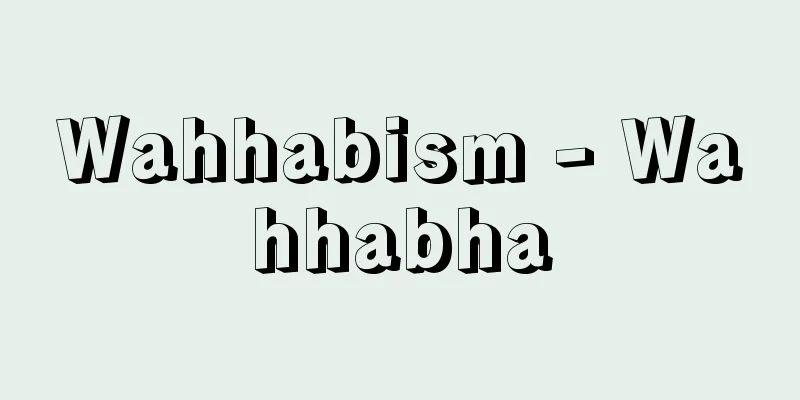Intraocular pressure - Ganatsu

|
The eyeball is a kind of precision ball-shaped camera, and a certain level of hardness is required to obtain a correct image; this hardness is called intraocular pressure or intraocular pressure. The normal average pressure for Japanese people is 14.5 millimeters of mercury, and anything higher than 21 millimeters or lower than 10 millimeters is considered abnormal. For example, high intraocular pressure causes visual field constriction and impaired vision, while idiopathic chorioretinal detachment causes a significant drop in intraocular pressure, resulting in impaired vision. The main factor in maintaining a constant normal intraocular pressure is the circulation of aqueous humor. Aqueous humor is secreted from the ciliary body at a constant rate, travels from the posterior chamber through the pupil to the anterior chamber, passes through the wall of the cornea and into Schlemm's canal, and then flows out through the aqueous vein into the episcleral venous system. If something obstructs the flow anywhere in this circulatory system, or if the rate of aqueous humor production increases, intraocular pressure will rise, and in the opposite situation, intraocular pressure will fall. The intraocular pressure is measured using a tonometer. If the intraocular pressure is significantly high or low, it can be felt by pressing the eyeball with a fingertip above the eyelid, but this is inaccurate. The most accurate method that is considered the international standard is the Goldmann applanation tonometer used by specialists. This method involves pressing a small flat prism against the eyeball (cornea), and when the area of the pressed part becomes constant, the intraocular pressure is determined from the pressure on the flat surface. There is also an electric tonometer that records the pressure change electrically. Currently, non-contact applanation tonometers are in widespread use because they prevent corneal and conjunctival infections and are safer. This method sprays an air jet through a small hole onto the cornea, capturing the infrared reflection from the cornea that has been deformed by the air jet and measuring it. It is convenient because it does not require anesthesia and does not touch the eye, but the measured value is somewhat unstable. Note that intraocular pressure has no direct relationship to systemic blood pressure, and intraocular pressure is normal even in the case of high blood pressure. There are physiological fluctuations in intraocular pressure. Although it differs depending on posture, there is usually a "diurnal variation" where the pressure rises by a few millimeters in the morning and gradually decreases in the afternoon. In some cases of glaucoma, the pressure rises considerably at night, so accurate measurement requires continuous measurement for 24 hours, but it can be substituted by measuring several times at different times. In recent years, it has become clear that measurement values are affected by individual differences in corneal thickness and its biophysical properties, and methods have been devised to avoid these effects, but they have not yet reached a level that can be used as an international standard. [Kazuo Iwata] [References] | | | |Source: Shogakukan Encyclopedia Nipponica About Encyclopedia Nipponica Information | Legend |
|
眼球は一種の精密なボール型カメラであり、正しい影像を得るためには一定の硬さが必要で、この硬さを眼圧または眼内圧とよんでいる。日本人の正常では平均14.5ミリメートル水銀柱の圧があり、これが21ミリメートルより高いものや10ミリメートル以下のものは異常とされる。たとえば、眼圧が高くなる高眼圧緑内障では視野狭窄(きょうさく)、視力障害が起こり、特発性網脈絡膜剥離(はくり)では顕著に眼圧が低下し、視覚の障害を引き起こす。 正常眼圧を一定に支えている主役は眼房水(がんぼうすい)の循環である。眼房水は毛様体から一定の速度で分泌され、後房から瞳孔(どうこう)を経て前房に至り、隅角壁を通り抜けてシュレム管に入り、房水静脈を経て上強膜静脈系に流れ去る。この循環系のどこかに流れを遮るものが出現したり、房水の産生速度が高まったりすると、眼圧は上昇するし、逆の状況下では眼圧は下降する。 眼圧の値は眼圧計によって求められる。眼圧が著しく高かったり低かったりすれば、指先で眼球を瞼(まぶた)の上から押すことで感じ取れるが、不正確である。国際的な規準とされる正確な方法は、専門医が使用するゴールドマン圧平眼圧計によるものである。これは平面小プリズムを眼球(角膜)に押し付け、押し付けられた部分の面積が一定になったとき、平面にかかっている圧力から眼圧を知る方法で、圧力変化を電気的に記録させる電気眼圧計もある。現在、角膜・結膜感染を防ぎ、より安全であることから非接触型圧平眼圧計が普及している。これは、小孔から空気ジェットを角膜に吹き付け、それによって変形した角膜からの赤外線反射をとらえて測定するもので、麻酔は不要であり、目にも触れないので便利であるが、測定値はやや不安定である。なお、眼圧は、全身の血圧とは直接的な関係はなく、高血圧があっても眼圧は正常である。 眼圧には生理的な変動がある。姿勢によっても異なるが、通常、朝は数ミリメートル以内の上昇があり、午後からしだいに低くなる「日内変動」がある。緑内障では夜間かなり上昇するものがあるので、正確には24時間の連続測定を要するが、測定時間帯を変えて数回測定することで代用されている。 近年、個人差のある角膜の厚さやその生物物理学的性質によって測定値が影響を受ける事実が明らかとなり、それらの影響を避ける方法が考案されているが、いまだ国際的な規準となるレベルに達していない。 [岩田和雄] [参照項目] | | | |出典 小学館 日本大百科全書(ニッポニカ)日本大百科全書(ニッポニカ)について 情報 | 凡例 |
>>: Pressure-sensitive copying paper
Recommend
Tenjingawa
A river that flows through the center of Tottori ...
Attila - Attila (English spelling)
King of the Huns (reigned 434-453). After the dea...
Giant armadillo
It is an animal of the Armadillidae family in the...
Subject and predicate - shugojutsugo
A term in grammar and logic. It is a commonly know...
Lady Wei (English spelling)
A calligrapher from the Jin Dynasty in China. Her ...
Karesansui - Dry Landscape
A garden term. There are five other variations of...
Dark adaptation
…When we move from a bright place to a dark place...
Australian wheat weevil
...The lesser grain borer, Rhizopertha dominica ,...
Takeshi Kimura
Novelist and critic. Born in Okayama Prefecture. ...
Brockhaus, FA (English spelling) BrockhausFA
…A German publishing house founded in Amsterdam i...
Soft corn
...The stems and leaves are used as animal feed. ...
Apidium
…A large number of Oligocene primate fossils have...
Replacement
...While each school of Noh and Kyogen has its ow...
Hydrodesulfurization - Hydrodesulfurization
A method of removing sulfur compounds contained i...
saproophagous
...It is also unreasonable to use the word herbiv...









